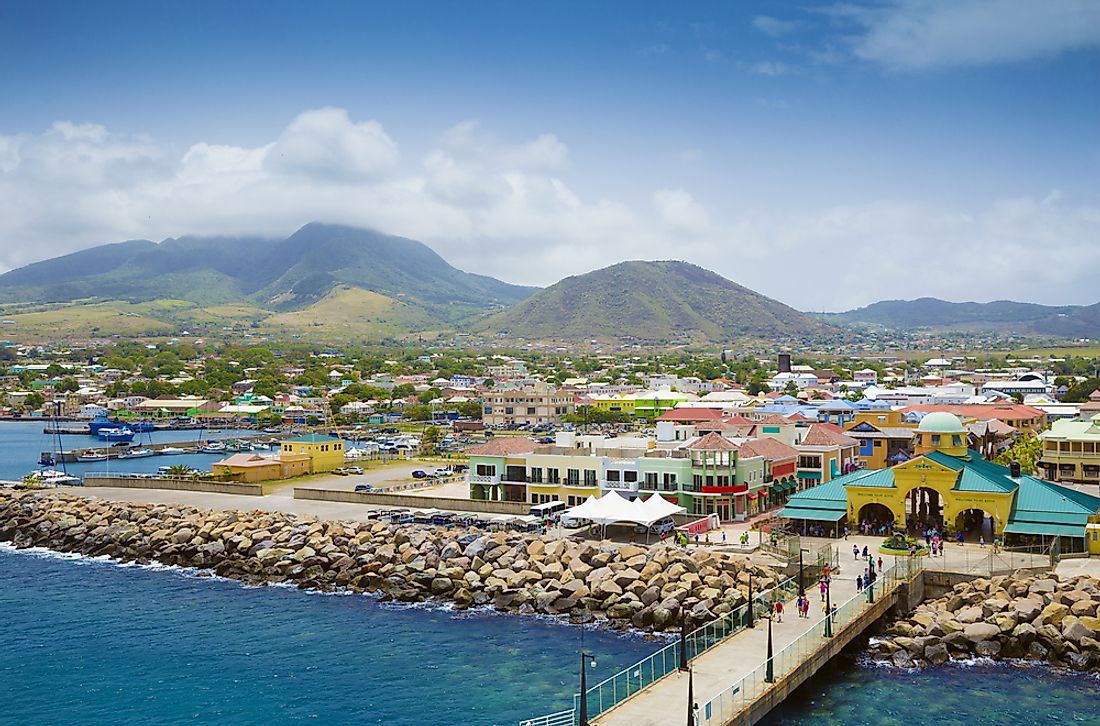What Are The Biggest Industries In Saint Kitts and Nevis?

Saint Kitts and Nevis is a two-island country covering approximately 269 square kilometers of land in the West Indies. The two islands border the Caribbean Sea and the Atlantic Ocean. The economic sectors that are pillars to Saint Kitts and Nevis are the tourism industry, the agricultural sector, and the services sector. Some of the trade organizations that Saint Kitts and Nevis are members of the United Nations (UN), Organization of Eastern Caribbean States (OECS), the Caribbean Community (CARICOM), and Organization of the American States (OAS).
Biggest Industries In Saint Kitts and Nevis
Tourism is the top foreign exchange earner followed by the service sector and lastly the agricultural sector. These sectors replaced the sugar industry after its closure in the year 2005. The manufacturing industry is also developing; contributing about 6% to the Saints Kitts and Nevis economy.
Tourism
The Caribbean is the most tourism intensive region in the world and tourism is the leading source of foreign exchange for most Caribbean nations. Saint Kitts and Nevis have developed its tourism sector to the point that it is currently the largest foreign exchange earner compared to other industries. The two islands are endowed with a naturally rich and serene environment such as a beautiful stretch of blue skies, clean air, and magnificent beaches. The government has boosted the growth of this sector by prioritizing its physical and social infrastructure. It has also created a friendly economic environment that is conducive for the development of the private sector. Saint Kitts and Nevis have a wide range of tourist attraction sites including the natural heritage such as Brimstone Hill Fortress in St. Kitts which is a UNESCO world heritage site. Other tourist attraction destinations are forests, wetlands, marine habitats, several historical landmarks, plantation houses, churches, archaeological sites, shipwrecks, fortifications, as well as historical towns. The government intends to secure all the parks and the protected areas in order to ensure that all the critical natural and cultural resources are under strict surveillance and adequately protected. This protection plan is also aimed at safeguarding these resources for the present and future generation by preserving the tourist attraction sites for cultural, historical, and scientific and educational purposes.
Agriculture
The major crop that farmers in Saint Kitts and Nevis have been cultivating for hundreds of years is sugarcane. Prior to the success of sugarcane farming, farmers experienced huge losses. As a result, the government started providing funding such that by the end of the year 1999, sugarcane production had increased to 197,000 tones. However, this quantity was still alarming and the islands continued to experience decreased national sugarcane production amidst financial subsidies from the government. In 2005, sugar production ceased and farmers started cultivating other crops. Today, 39% of the islands’ total land area is devoted to crop farming. Farmers in St. Kitts grow peanuts for domestic consumption whereas those in Nevis Island cultivate coconuts and cotton. Other food crops grown in Saint Kitts and Nevis are sweet potatoes, onions, tomato, cabbages, carrots, and breadfruits. Animal husbandry is also practiced in the islands. Feeding areas occupy about 2.7% of the total islands area with most of the animal feeds obtained from Pangola and Bermuda. By the end of the year 2003, the total number of livestock in both islands had been estimated at 14,000 sheep, 14,400 goats, 4,400 cattle, and 4,000 pigs. The fishing sector is not fully developed in the islands as the fish caught cannot successfully feed and satisfy the local demand. Thus, large quantities of salted, dried, and smoked fish are still imported from Canada and the US for consumption.
Service Industry
The service industry is significant in the economy of St. Kitts and Nevis due to its top-notch innovation strategies and vital infrastructure for business and trade. Besides the tourism sector, the service sector is one of the largest growing sectors in St. Kitts and Nevis. It accounts for a large portion of the country’s GDP. The unity of services industries was established to build a large, stronger institutional base to enhance the capacity and competitiveness of this sector. The recent new trade rules formulated by the government and stakeholders in the sector have enabled dramatic advances in technology resulting in St. Kitts and Nevis among the efficient economies in the world.











